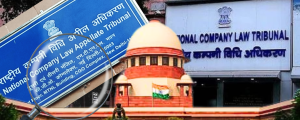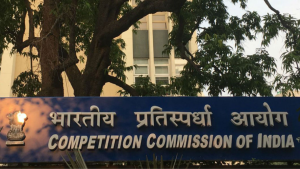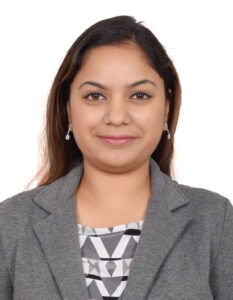

Video Conferencing, E- Filing, and Live Streaming in the High Court
- /
- Articles and Blogposts /
- Video Conferencing, E- Filing, and Live Streaming in the High Court
The Supreme Court recently heard a petition seeking virtual court hearing be declared as a fundamental right. This brings to light the changes that have transpired in the courts during the pandemic, particularly in the realm of technology used for court proceedings. The pandemic challenges the justice system in multiple ways. One of the first impediments is conducting hearings, while there is a need to social distance and adhere to lockdowns. The Supreme Court issued directions for the administrative functioning of the courts using its powers under Article 142 of the Constitution. The directions entailed supporting the various measures taken by the high courts to enable the transition to video hearings, as per the modalities of each of the high courts. The response of the high courts to the pandemic has been a mixed bag; whether for its own functioning or those of the district courts, for which it is administratively responsible. Some high courts swiftly passed video conferencing rules (VC Rules), e-filing rules, etc, while some issued Standard Operating Procedures (SOP) or guidelines. Thus, certain high courts passed various rules, guidelines, etc to allow for the filing and hearing of cases virtually, while others only enabled them.
Please find below Table A, highlighting the rules/guidelines/SOPs for video conferencing and e filing, as issued by the various high courts.
TABLE A
| High Court | Video Conferencing | E-filing |
| Allahabad | SOP | SOP, Instruction |
| Andhra Pradesh | Guidelines | Guidelines |
| Bombay | SOP | Practice Note |
| Calcutta | Notification | Notification of Practice and Procedure |
| Chattisgarh | Rules | Rules |
| Delhi | Rules | Practice Directions |
| Gauhati | Rules | Rules |
| Gujarat | Rules | Circular |
| Himachal Pradesh | Guidelines | Rules |
| Jammu and Kashmir | Guidelines | Circular |
| Jharkhand | Rules | Rules |
| Karnataka | Rules as well as updated Guidelines | Guidelines |
| Kerala | Guidelines | Rules |
| Madhya Pradesh | Rules | Rules |
| Madras | Rules | Rules |
| Manipur | Rules | Guidelines |
| Meghalaya | Rules | Guidelines |
| Odisha | Rules | Guidelines |
| Patna | Rules | Rules |
| Punjab and Haryana | Guidelines | SOP |
| Rajasthan | Rules | Guidelines |
| Sikkim | Rules | Rules |
| Telangana | Rules | Rules |
| Tripura | Rules | – |
| Uttarakhand | Rules and SOP | Notification |
VIDEO CONFERENCING
The courts implementing the rules have largely followed the Supreme Court e-Committee’s Model VC Rules. While some courts have detailed instructions as to making a request for a VC hearing, examination of witnesses in a VC hearing, etc, some don’t have comprehensive instructions. Some high courts use three to four different technological applications for the hearings, while some adhere to one application. A perusal of the various high courts’ websites reveals that almost all high courts have been engaging with VC hearings, one way or the other. Further, in terms of adopting technology for conducting VC, all the high courts have adhered to some form of medium to facilitate the hearings. Thus, as regards VC, there is a large-scale acceptance to use it, even if the high courts vary in terms of making formal rules or adhere to issuing guidelines, SOPs, etc.
While the VC Rules, guidelines, practice directions and the SOP lend legitimacy to the administrative functioning of the VC hearings in the courts, it is not clear why the courts relying on SOPs, guidelines, etc are hesitant to make formal VC rules. One interpretation could be that they consider VC as a temporary measure and are hence satisfied with updating the SOP and guidelines. In some courts the SOP has remained dynamic. For instance, the Allahabad High Court initially using the JITSI platform for its virtual hearings, is now moving to the WebEx platform and the SOP has been updated to reflect the technology change. In the courts where the rules or exhaustive guidelines have been framed, the same clearly allow for the growth in application of VC hearings beyond the initial usage, which was restricted to arguments. The framing of the evidence-related provisions in the VC rules allow courts to conduct trial using VC. Subordinate courts recording evidence using VC are adhering to the respective high court rules/guidelines. In certain scenarios, the technology available is also leveraged to ensure that the evidence hearings are effective. Recently, in a subordinate court in Delhi, the Cisco WebEx platform allowed for real-time sharing of the transcription using the ‘screen share option’ while evidence was recorded. Thus, the courts are developing ways to use technology tools to elevate the existing VC rules to allow for expanding the usage of VC hearings beyond arguments. This enhancement of VC is feasible only when there are clear instructions as to recording evidence and other prospective applications for VC hearings.
The courts which have SOPs are lacking in the long-term vision as regards improving the VC hearings. The SOPs in some courts do not have evidence related provisions. The high courts functioning on SOPs and guidelines that are limited in their VC application should consider revising the same and adopting the comprehensive VC rules. The Supreme Court e-Committee’s Justice D.Y.Chandrachud recently elaborated on the need for high courts to consider suitable VC solutions and software. This underlines the importance of recalibrating the existing VC guidelines to suit a more synchronous application towards VC hearings, that include evidence and document management.
The implementation of the VC rules by the various high courts allow them to understand the nuances of technology. This could contribute to making purposeful revisions to the rules. For instance, issues that have come to forefront involve who can access VC links, how to manage evidence hearings, etc. The learnings from VC hearings can be useful while the rules are revised or when practice protocols are updated alongside the rules. VC hearings can only benefit with the development of other related processes like electronic filing, evidence management protocols, etc. The focus should be on developing rules and protocols for the allied processes.
E- FILING
Electronic filing is one of the first steps in transitioning towards a virtual court system which has become a necessity in the pandemic hit world. It enables a petitioner, an enrolled advocate, and even the police to electronically file legal papers in both civil and criminal cases before all high courts and district courts. According to the 103rd parliamentary committee report on the functioning of virtual courts/court proceedings through VC submitted in September, 2020, in about half of the states e-filing is still in the trial stage, both in the high courts and the subordinate courts. The report showed that 11 of the 25 high courts in the country are yet to adopt the e-filing system. Since then, owing to the pandemic’s continuity, the intensity of implementation of these efforts has kicked in pace. The e-Committee has published the model rules for e-filing.
Around eleven High Courts (Delhi, Chhattisgarh, Gauhati, Himachal Pradesh, Jharkhand, Kerala, Madhya Pradesh, Patna, Sikkim and Telangana) have adopted these model rules without any substantial deviation. Some of them have instituted a single set of e-filing rules for cases both at the High Court and at the subordinate courts under its supervisory jurisdiction (for e.g.Patna). Others have adopted separate rules for the different levels of courts (for e.g. Jharkhand, Madhya Pradesh).
Meanwhile, High Courts in other states have issued some or the other form of documentation governing e-filing. These guidelines, instructions, practice directions or SOPs, however, are not as comprehensive as the model rules and are often silent on key aspects such as details about digital signature, use of designated counters for e-filing, obtaining copies and cost of access of the e-filed data to authorized persons, situations under which e-filing may be exempted etc. Some High Courts like the Allahabad High Court had e-filing instructions since 2017 even before the pandemic hit, and before the model e-filing rules were formulated. In addition to these, the Allahabad High Court also adopted special SOPs for e-filing of fresh urgent matters during the pandemic/lockdown.
Several tribunals have also started transitioning to online mode of functioning. The Income Tax Appellate Tribunal launched e-filing facility for appeals in June this year. The Government recently announced the Debts Recovery Tribunals and Debts Recovery Appellate Tribunals Electronic Filing (Amendment) Rules, 2021 which makes e-filing mandatory for recovery of debt amounting to ₹100 crore and above. Some of the High Courts which have adopted rules for e-filing extend the application of these rules to the tribunals under their supervisory jurisdiction (for e.g. Guahati, Jharkhand, Patna) and some others do not (for e.g. Telangana, Madhya Pradesh).
Compared to the other High Courts in the country, the Delhi High Court is far ahead in terms of technology infrastructure and also has fairly sufficient manpower. It introduced e-filing as early as 2009 and has seen a steady increase in the number of lawyers opting for e-filing. In Kerala however, the introduction of the e-filing rules has been strongly resisted by the Bar and the advocate’s association citing several legal and technical problems. The Karnataka High Court recently noted that despite the introduction of e-filing facility last year, very few members of the Bar have taken advantage of it. Only 809 cases filed through the e-filing portal in the High Court and 7,424 in the district judiciary. In April 2021, an upgraded version, the e-filing module 3.0 was introduced by the e-Committee of the Supreme Court which made several improvements to design a more user-friendly version that simplified the registration of advocates on the e-filing software, enabled them to add their partners and clients on the e-filing module, provided online vakalatnama, readymade templates for pleadings, made provisions for online recording of oath, digital signing of case papers, multiple application filing besides enabling exchange of information and case papers effortlessly between advocates and courts without physical movement. However, in most cases, advocates and litigants are unaware of and unwilling to use these services. In order to overcome the hesitancy, several High Courts are conducting regular training programmes for advocates and court staff. Majority of the High Court websites have also uploaded user manuals and video tutorials showing how to register on and navigate the e-filing portal. Some High Courts have also uploaded manuals on how to purchase digital signatures from authorised vendors. e-Sewa Kendras and e-filing kiosks have also been set up to assist lawyers who are desirous of acquainting themselves with the e-filing procedures.
It is necessary to ensure that the rules of e-filing are consistent throughout the legal system. Not only will this allow for faster filing, it will also allow for easier movement of files in cases of transfer and appeals to higher courts. Therefore, all High Courts must quickly adopt and/or align their e-filing practices (rules,
instructions, SOPs, guidelines, or whatever nomenclature they are given) to develop a common e-filing practice.
LIVE-STREAMING
While some high courts have allowed for VC hearings to be accessed by all, some have bestowed the court with the discretion to decide on who can participate in these hearings. The pandemic and the courts’ new-found proclivity to engage more actively with technology has culminated in the adoption of live streaming. The usage of live streaming also helps in enhancing the principle of open justice. The Supreme Court of India in Swapnil Tripathi v. Union of India upheld the importance of open justice in the Indian courts and recognised the importance of technological solutions in improving access to justice, particularly for the litigants. As compared to virtual hearings and e-filing, live streaming is a nascent discussion in the high courts. As on date, the Supreme Court’s e-committee has issued the draft model rules on live streaming of court proceedings. Two High Courts, that is, Gujarat and Odisha have also recently adopted rules on live streaming on July 17 and 2 August, 2021 respectively. The Chhattisgarh High Court has also announced that it is preparing a plan for live streaming of proceedings of all courts under its supervisory jurisdiction. The Chief Justice of India has also indicated that the live-streaming of Supreme Court proceedings may begin soon and that the logistics are being worked out to enable this.
Several other courts have begun live-streaming of its cases, however, without any formal rules or guidelines governing such process. The Madhya Pradesh High Court has started live-streaming its proceedings pursuant to a petition filed by journalists that had challenged the Madhya Pradesh Video Conferencing & Audio-Visual Electronic Linkage Rules, 2020 to the extent they preclude ‘third parties’ from accessing virtual court proceedings. The Allahabad High Court too began sharing the VC links for its virtual Court proceedings pursuant to a similar challenge by journalists and law students. The Karnataka High Court has been experimenting with live streaming cases on YouTube since 31 May, 2021. Live-streaming of cases in the absence of any governing framework can give rise to several complications around data security, privacy, and unauthorized copying and dissemination of information. Hence, all courts, especially those courts which have already begun live-streaming, must adopt robust rules for live-streaming that boost transparency with adequate safeguards to protect competing interests and prevent misuse. The model live-streaming rules have made a clear and mindful attempt to strike such a balance, albeit with scope for further improvement.
The challenges to various electronic processes adopted under India’s e-Courts project stem from the lack of digital knowledge and digital divide amongst stakeholders, inadequate training of legal professionals, insufficient infrastructure in terms of internet connectivity and access to devices/gadgets, and absence of legal provisions that can ensure security and integrity of communications over the internet. That being said, the second wave has helped drive home a very important fact that the future of the judiciary lies in the virtual setup. It’s success will depend not only on the adoption of technological facilities by the courts and revamping their operating procedures, but also on the individual capacity of the stakeholders to adapt and adopt to this dynamic situation.
The views expressed in this article are solely those of the authors’ and they do not represent the views of DAKSH.

Sandhya PR
RECENT ARTICLES


Judicial discipline or lack thereof in NCLT and NCLAT

Year in Review: NCLT and NCLAT Under the Supreme Court’s Microscope

Testing the Waters: Pre-Implementation Evaluation of the 2024 CCI Combination Regulations

-
Rule of Law ProjectRule of Law Project
-
Access to Justice SurveyAccess to Justice Survey
-
BlogBlog
-
Contact UsContact Us
-
Statistics and ReportsStatistics and Reports
© 2021 DAKSH India. All rights reserved
Powered by Oy Media Solutions
Designed by GGWP Design
